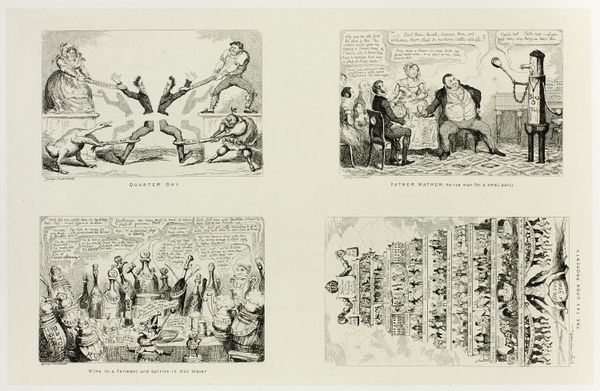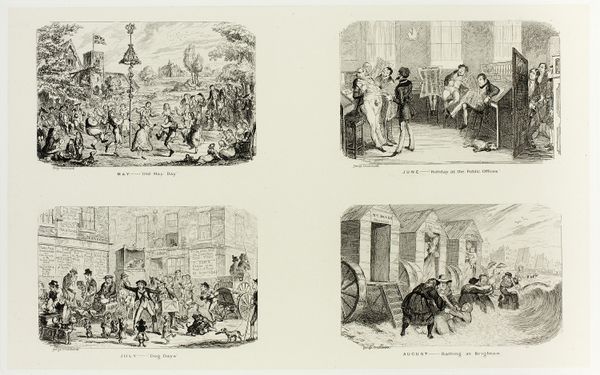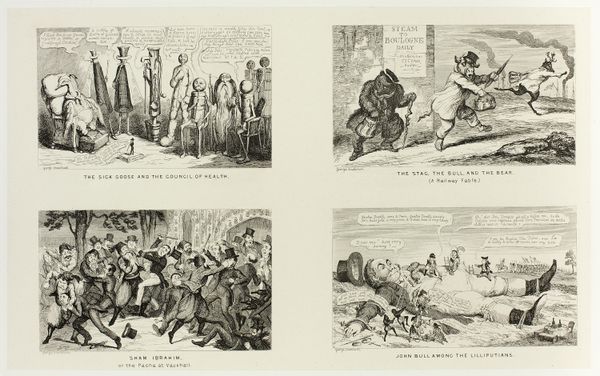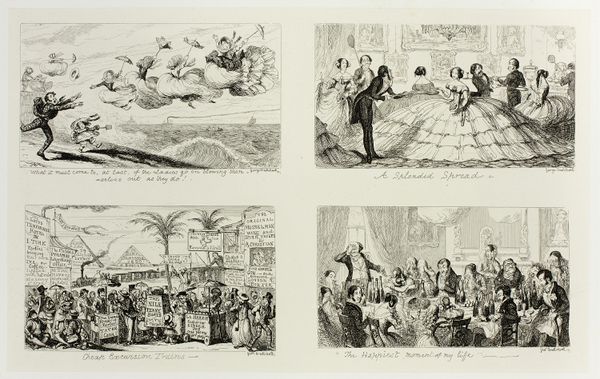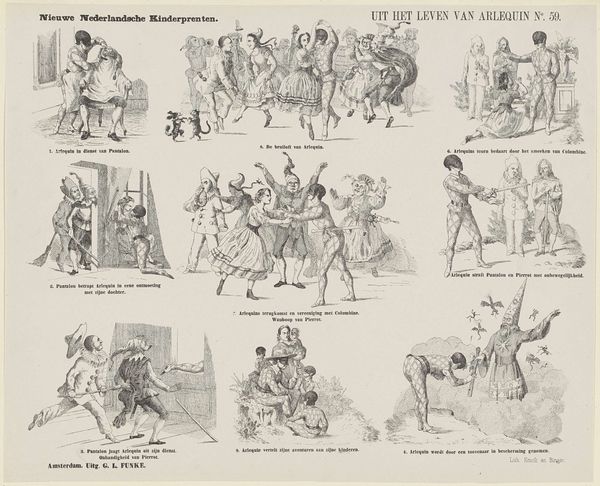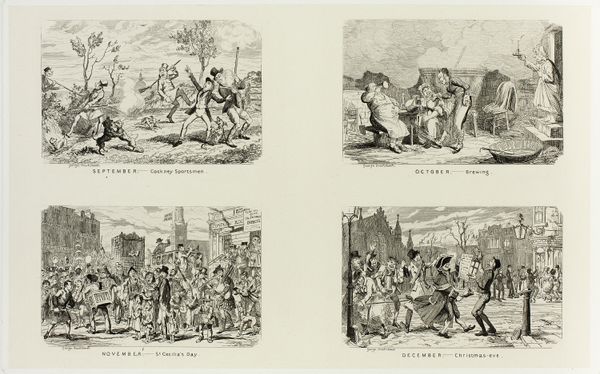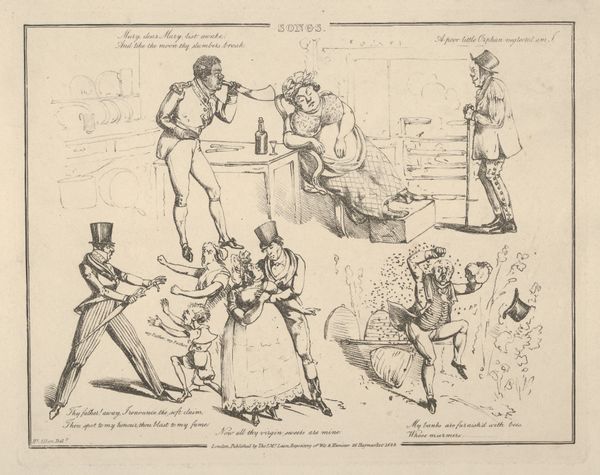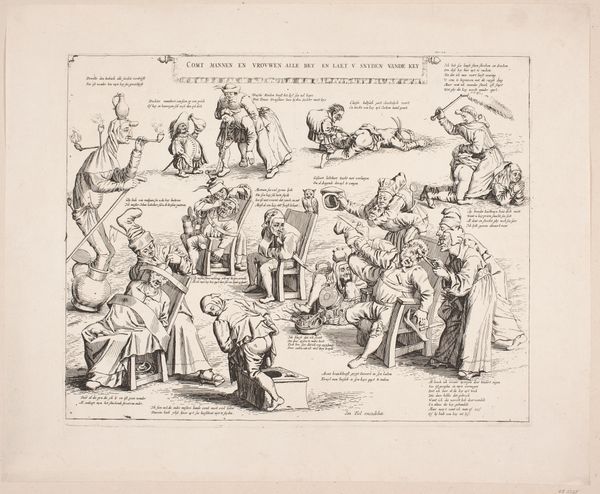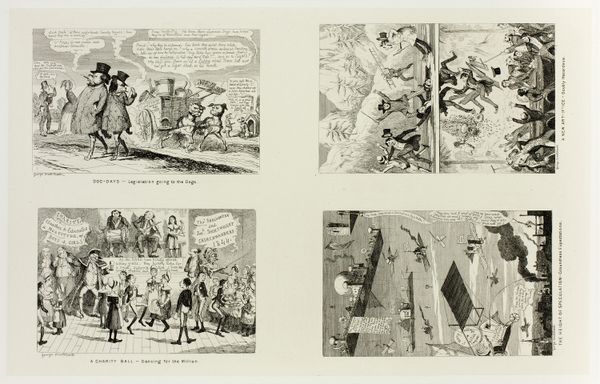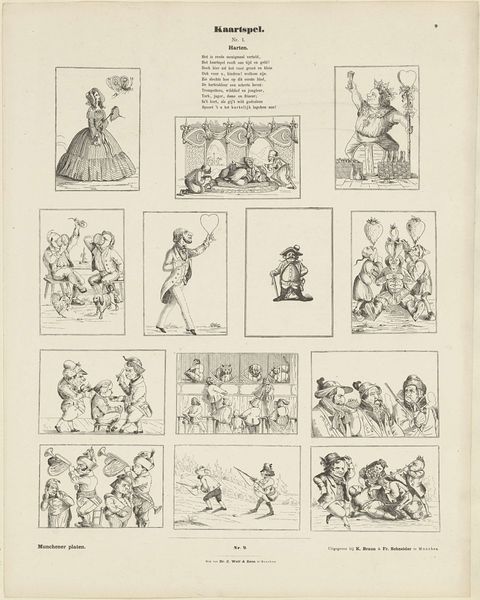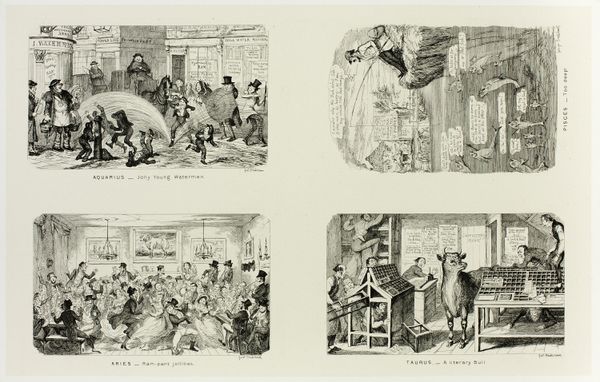
The Lord Mayors Show and the Lord Mayors Feast in Ireland from George Cruikshank's Steel Etchings to The Comic Almanacks: 1835-1853 (left) c. 1850 - 1880
0:00
0:00
drawing, print, paper, ink
#
drawing
#
narrative-art
# print
#
caricature
#
paper
#
ink
#
genre-painting
Dimensions: 163 × 201 mm (primary support); 251 × 342 mm (secondary support)
Copyright: Public Domain
Curator: Let’s explore “The Lord Mayors Show and the Lord Mayors Feast in Ireland,” a print by George Cruikshank, created sometime between 1850 and 1880. It’s a flurry of ink on paper, currently residing here at The Art Institute of Chicago. Editor: My first impression is organized chaos, a sort of satirical comic strip before the concept really existed. The style feels almost feverish, but the density of detail also draws me in. Curator: It is indeed dense. Cruikshank was a master of social commentary through caricature. These scenes, combined from his *Comic Almanacks*, speak volumes about class, privilege, and colonial relationships within Ireland. Consider the positioning: celebration on top, then excess and foolish stereotypes beneath, all feeding into, as the caption says, “The Fearful, but probable ultimate effects of feeding John Bull upon Foreign produce.” Editor: Ah, yes! The 'John Bull' reference becomes a critical part of understanding this. We see stereotypical caricatures representing various countries and their produce: "Dutch," "Italian," "American," and "French,". What do you make of those strange, costumed figures and what seem to be associated taglines above them? And what is he saying through them? Curator: This layering exposes how deeply rooted xenophobia and cultural stereotypes were within the socio-political landscape of Victorian England, while also nodding to broader concerns of class division. It satirizes perceived threats and the consumption of "foreign" goods that impacted domestic industries. Cruikshank wields familiar visual languages to shape public sentiment. Editor: I think it is impossible not to notice all of the references and visual allusions. He definitely tapped into archetypes. The almost manic quality and absurd situations would resonate with those aware of the day's socio-economic disparities, but even those unaware would likely understand it at a very deep level. Curator: It also suggests the precariousness of English dominance. By linking societal elites with caricatures meant to suggest "otherness" he implicitly critiques the systems that allow this structure. This is what brings art to life, it is both historical context and human psychology playing with social themes. Editor: Absolutely. His work really underscores the power of visual shorthand and how we unconsciously process symbols within a culture. I'll certainly look differently at future works that deal with politics, the social arena and archetypes!
Comments
No comments
Be the first to comment and join the conversation on the ultimate creative platform.
